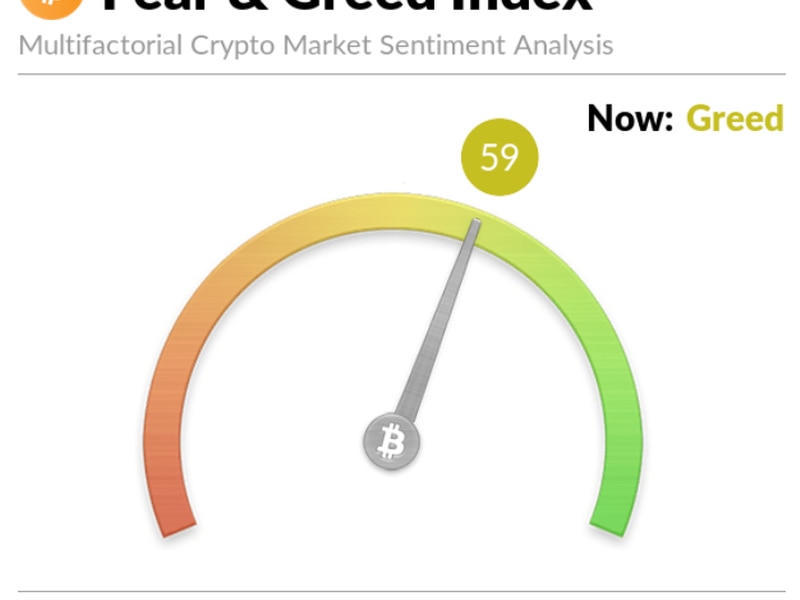How Web3 Marketing Changes the Game
The one thing – perhaps the only thing – that people on the internet can agree upon is that the internet is broken. We’re served up ads that are annoying. We’re always accepting cookies. We’re being tracked. We’re leaking data. And we can’t escape the tractor beam of the Googles and Facebooks of the world.
What if there’s a better way?
The promise of “Web3 marketing” is more than just a niche interest for ad execs. It could transform how all of us use the internet, how we consume media, and how we interact with our favorite movies and NBA players and coffee shops and whiskey labels.
This feature is part of CoinDesk’s Web3 Marketing Week.
Just as bitcoin removed the middleman of banks to offer peer-to-peer transactions, Web3 marketing could bypass Google and Facebook to let brands build relationships directly with consumers. A Web3 marketing framework, in theory, could preserve privacy, allow for better targeting, and even share revenue back to the users. “Google and Facebook don’t want to do this. They don’t have to,” says Dan Novaes, the Founder and CEO of Mode Mobile. “They’re giants. They’re behemoths. The issue with Web2 marketing is that you’re SOL if you don’t play nice with those products.”
Novaes has been studying the alignment of customers and brands for years–ever since high school, when he launched an e-commerce company that swelled to $2 million, in part by scooping up wholesale electronics in the U.S. and then flipping them overseas for higher prices. (This was a simpler time.)
Years before anyone used the term “Web3,” Novaes hatched a project that rewarded users for doing everyday tasks, like watching videos or reading the news: Mode Mobile. People liked it. Using a custom smartphone, the “EarnOS” lets you stream music and get paid for it, hence the tagline “turning smartphones into earnphones.” Mode Mobile was named as Deloitte’s #1 fastest growing software company, has over 10 million downloads on the Google Play store, and claims to have helped users earn and save over $250 million. More importantly, the model lets brands reach consumers directly… without forking over rent to Google or Facebook.
In the Web2 world this is hard to do. “90% or more of the whole market for advertising is being monopolized by Google, Facebook, and a few other companies,” says Filip Wielanier, co-founder and CEO of Cookie3. “We believe that we should decentralize this kind of distribution.”
This distribution of ads comes from creators. Less Big Tech, more micro-influencers. Creators like singers, comedians, and KOLs would be compensated by the brand, and then the creators would hawk the product. Wielanier’s team is building out the “Cookie3 affiliate” and a Cookie DAO to build this infrastructure.
As Cookie3 described in a recent Twitter/X thread, Web2 marketing is top-down, centralized, and one-way communication. Web3 is bottom-up, tokenized, transparent, and data-driven. Web3 marketing would also solve the vexing problem of, well, cookies.
Your attention is getting spammed by so many different things. And that’s why the cost to acquire users is only going up
It can feel as if we spend half our time on the internet clicking “Accept Cookies.” This has become as mindless as clicking “Accept Terms and Conditions” when downloading software updates. We bristle at being tracked but we click “Yes” because we have no choice. But what’s mildly annoying for you and me is an almost existential problem for digital marketers.
Let’s say you want to serve an ad that targets 21-to-34-year-old males in Kentucky. You don’t waste money spamming the entire United States, so you use cookies to refine your audience. The problem is that cookies are only a clunky workaround. “The cookie is a non-persistent item inside of your browser,” says Chris Outram, Head of Blockchain at Publicis Media. “It’s built for storing log-in data.”
Outram calls cookies “brittle,” as some browsers don’t store cookies, users can refuse cookies, and cookies were never really intended as the key link in a marketing campaign. They’re simply all we have.
With Web3? In theory, says Outram, we’d dramatically change the infrastructure of the internet, swapping these brittle cookies with something more useful – and privacy preserving – to both brands and users alike. The details are still a whopping TBD but this will likely involve zero-knowledge proofs, where you can signal to brands your interests without revealing the rest of your online behavior. “That’s the magic unlock,” says Outram. “We can parse out the data we give as consumers.”
There are other unlocks. From the brand’s perspective, they could reward users with a token that would give true ownership, strengthening that connection. “The moment you can take people and have them be an owner inside of a network, they’re no longer a customer. They’re an ambassador,” says Novaes. “And they talk and act in a very different way.” This is why Novaes’ project now includes the Web3 token $EARNM (as in “Earn’M”). His Web2 goal was to turn users into earners; now his Web3 goal is “to turn earners into owners.”
As anyone who has spent much time in Web3 knows, token-holding can build communities and loyalty. (See: WAGMI.) This is mana for brands. As uber-VC Chris Dixon once said, “When somebody owns something and feels skin in the game, they want to go talk about it. They want to evangelize it.”
Novaes gives a surprising example from his own Mode Mobile and EARNM community. As outlined on its website, users of EARNM can earn prizes such as a Toyota Corolla, a Lamborghini, or even the world’s biggest cookie. But these aren’t the prizes that stand out. Consider “Prize #5: Harness the Power of a Troll Army.”
How does one harness a Troll Army? Novaes explains that his mailing list has over one million people and they are so engaged – so aligned – that they would happily follow instructions and troll an intended target. “If I sent one email to my user base, and I was like, ‘Go on Jeff’s Twitter and put these emojis…’” The army would do it. (Novaes clarifies that the trolling needs to be legal.)
But the trolling isn’t really the point. It’s easy to see how a Troll Campaign could get toxic in the wrong hands – or maybe even the right hands – but the larger takeaway is that the community is hyper-engaged and hyper-loyal. (See also: XRP Army.) Every brand covets this. “You have an army that’s aligned with you,” says Novaes. “That’s really, really powerful.”
This is not to say that Web3 marketing is a silver bullet. It can backfire; it has backfired. “There are aspects of Web3 that are super messed up, and not sustainable,” says Novaes, as some Web3 projects only worked in the short-term by showering users with freebies. Who’s paying for this marketing? Often the rewards come from either a soaring token price or the project’s capital. The problem is that prices can fall and capital runs out. “The Axie Infinity thing will happen over and over again,” says Novaes, predicting that the recent trend of air-drops is “not sustainable.”
:format(jpg)/cloudfront-us-east-1.images.arcpublishing.com/coindesk/FJHHNMTTH5ECBH55J5I7HMDCC4.jpg)
Novaes’ project, EARNM, tries to tackle this problem with a clever system of “mystery boxes” as rewards. Instead of just doling out tokens to all, users pay a minting fee to unlock the mystery boxes (which contain different types of prizes), and these minting fees inject revenue into the system and create a deflationary pressure. Then the rewards inside the mystery boxes have different “vesting periods,” intended to make the tokenomics more sustainable.
Philosophical merits of decentralization aside, there’s another very concrete problem with the current state of Web2 marketing: It’s no longer very effective. “It’s hard to cut through the noise,” says Novaes. Let’s say you’re a startup and your new killer product is in the App Store. “If you launch an app, it’s not even a pin-drop,” says Novaes. “People don’t care. Your attention is getting spammed by so many different things. And that’s why the cost to acquire users is only going up.”
Yes, this is all still very theoretical and yes, it’s unclear how regulations and legal concerns will complicate innovation. But it’s also true that new Web3 products – in theory – could give marketers a shiny new tool kit…and something that consumers would actually enjoy.
To illustrate the potential of Web3 marketing, Outram gives the contrasting example of a “hamburger coupon” vs. “whiskey ambassador.” In traditional Web2 marketing you might give a customer a $1 coupon for a hamburger. But that’s boring. Not even hamburger lovers would really care. So imagine this model instead…
“I like whiskey,” says Outram. “And I can prove that I have a really good sense of what good whiskey is. If you’re a high-end whiskey provider, don’t you want me out there in front of your brand?” So how do you prove you know your whiskey? (Most ways of proving your whiskey palate are decidedly offline.)
Thanks to the new tools of Web3, says Outram, perhaps you could show some on-chain proof that you attended a whiskey tasting, or proof that you bought certain barrels. And because this is all privacy-preserving, you’d let brands see it. “I would permit any whiskey brand to see my on-chain customer journey,” says Outram. “I’m signaling to them, ‘hey, come to me.’”
This is a better version of a cookie. This is a better version of the brand-customer relationship. This is a better version of the internet.
Edited by Benjamin Schiller.









